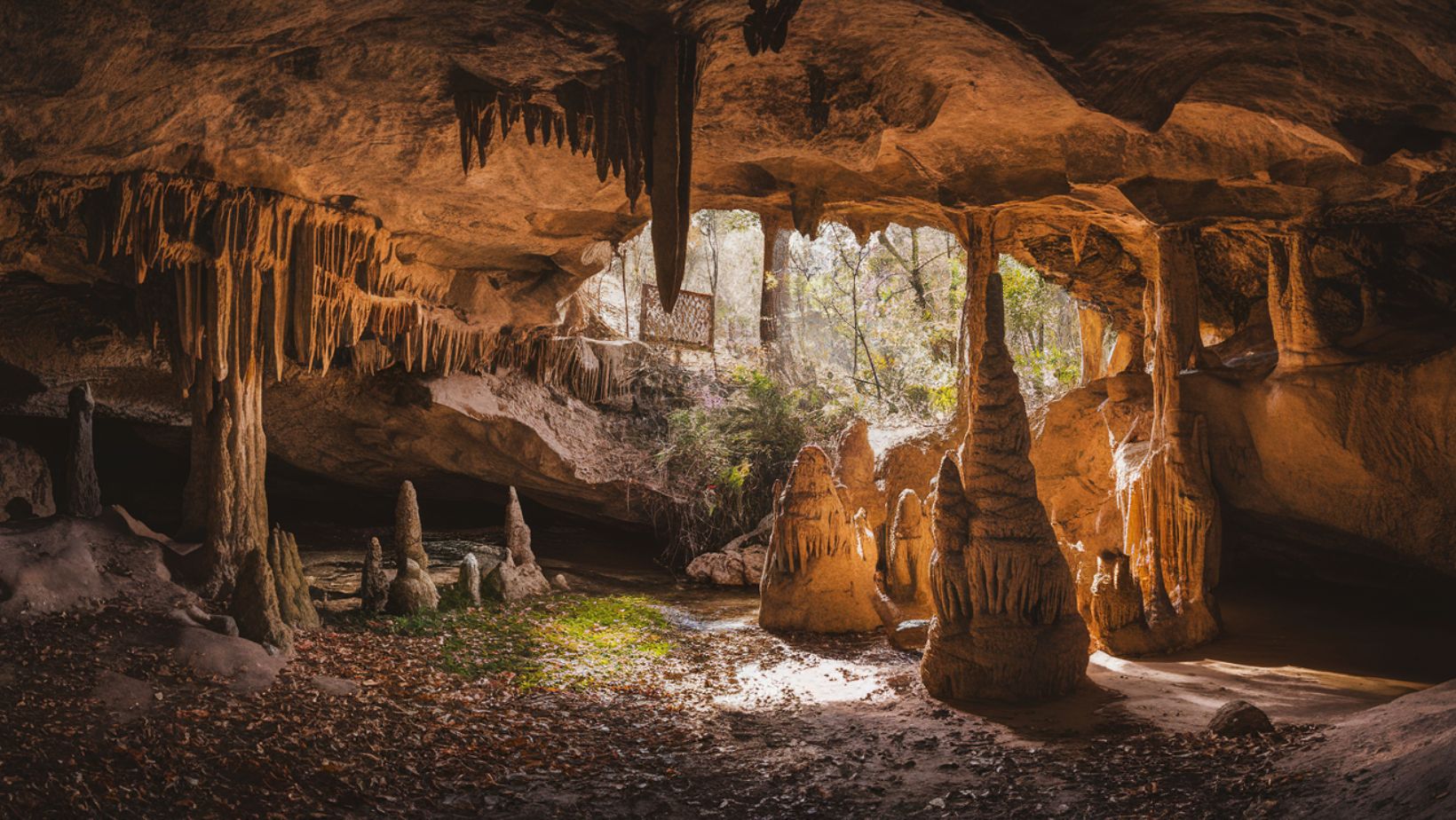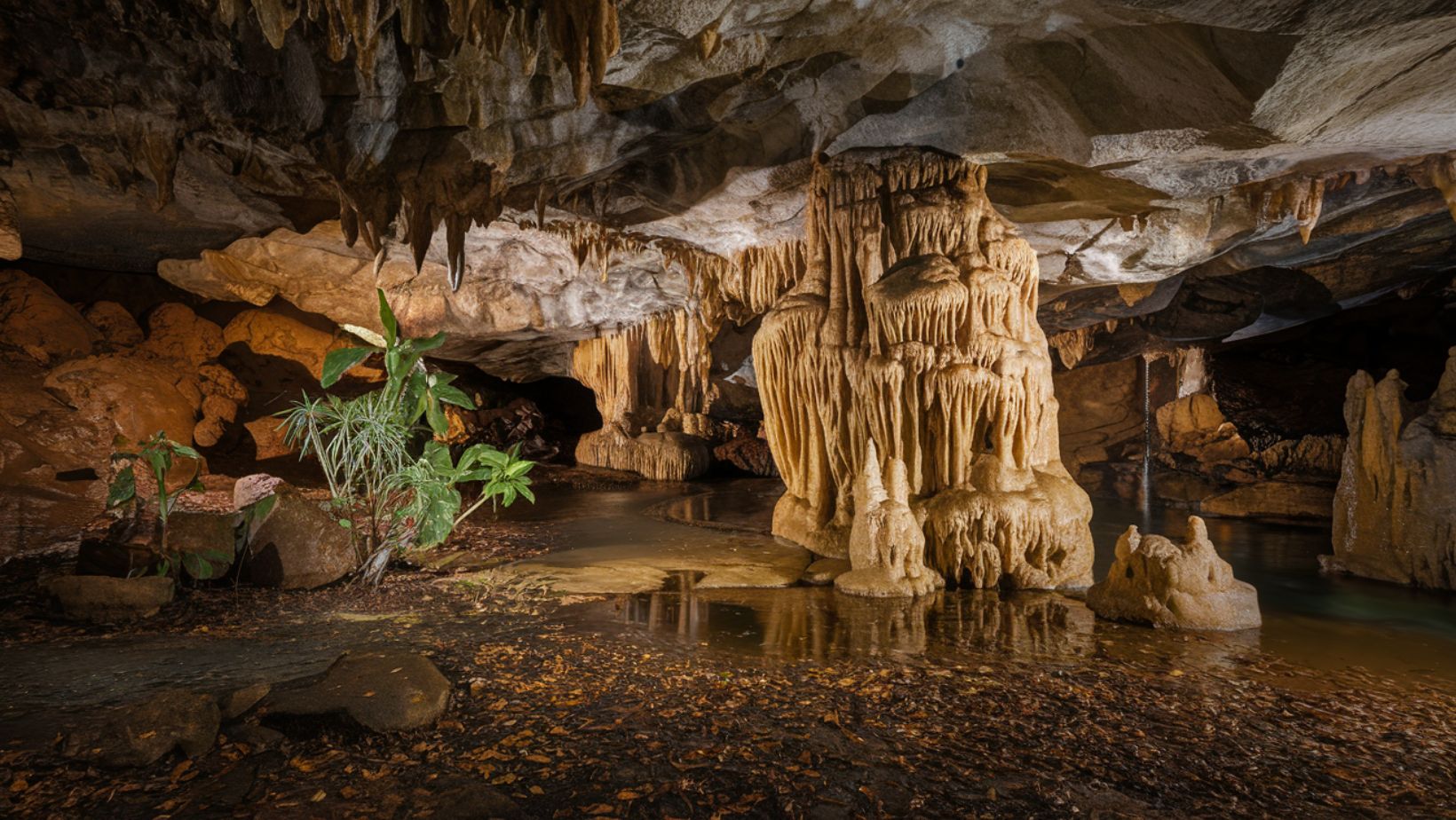What lies beneath the sun-scorched earth of Australia’s Northern Territory, just 30 kilometers south of Katherine? What ancient secrets does this mysterious underground realm hold, where darkness reigns eternal and time seems to stand still?
How have these caves managed to remain relatively unknown despite being one of the few tropical cave systems in Australia accessible to the public? What makes the Cutta Cutta Caves so uniquely different from any other cave system in the Southern Hemisphere?
A rare tropical cave system reveals the hidden face of the Northern Territory
The Cutta Cutta Caves Nature Park showcases one of Australia’s most distinctive geological formations – a tropical karst system that formed millions of years ago when the area was submerged beneath an ancient sea. Unlike the cold, damp caves commonly found in temperate regions, these caves maintain a constant temperature of 26-28°C (79-82°F) year-round, creating a unique ecosystem that supports specialized wildlife adapted to this warm, humid environment. The limestone caves extend for several kilometers underground, though only 750 meters are accessible to visitors through guided tours.
The caves serve as a sanctuary for rare nocturnal species that cant be found anywhere else
Within the warm confines of Cutta Cutta, an extraordinary array of wildlife has made these caves their permanent home. The cave system hosts five species of bats, including the rare ghost bat and orange horseshoe bat. Perhaps most remarkably, it’s one of the few known habitats of the white-breasted water rat, which has evolved to navigate the cave’s darkness. The caves also harbor a significant population of brown tree snakes, which have adapted to hunting in complete darkness, making these caverns a unique predator-prey study site.
Ancient Aboriginal connections run deep beneath the surface
The Jawoyn people, traditional custodians of the land, have maintained a profound spiritual connection to these caves for thousands of years. The name “Cutta Cutta” comes from their language, meaning “many stars” – believed to reference either the sparkle of the cave formations or the colony of bats that emerge at dusk, their eyes gleaming like stars in the twilight.
Local indigenous guides share carefully selected stories about the caves’ significance in dreamtime narratives, though many sacred aspects remain protected knowledge within their community.
Modern science meets ancient geology in this living laboratory
Research teams from across the globe regularly visit Cutta Cutta to study its unique formation processes. Unlike caves in cooler regions, the tropical conditions create distinctive erosion patterns and mineral deposits. The caves continue to grow and change, with active formation processes visible throughout the system. Scientists have discovered that the rate of stalactite and stalagmite formation here differs significantly from temperate caves, providing valuable insights into how climate affects cave development.
Sustainable tourism practices protect this fragile underground ecosystem
To preserve the delicate balance of the cave system, visitor access is carefully managed through guided tours led by trained rangers. These tours operate seasonally, as the caves can flood during the wet season (November to April). Specialized lighting systems have been installed that minimize impact on the resident bat populations, while elevated walkways protect the cave floor and its inhabitants. Visitors must follow strict protocols, including not touching cave formations, as the oils from human hands can prevent further mineral deposits from forming.
The caves reveal climate change patterns through their ancient formations
Environmental scientists have identified Cutta Cutta as a valuable site for studying historical climate patterns. The caves’ limestone formations act as natural archives, preserving evidence of past climate conditions in their mineral layers. By analyzing these formations, researchers can reconstruct thousands of years of climate history in Northern Australia, providing crucial data for understanding long-term climate change patterns in the region.

